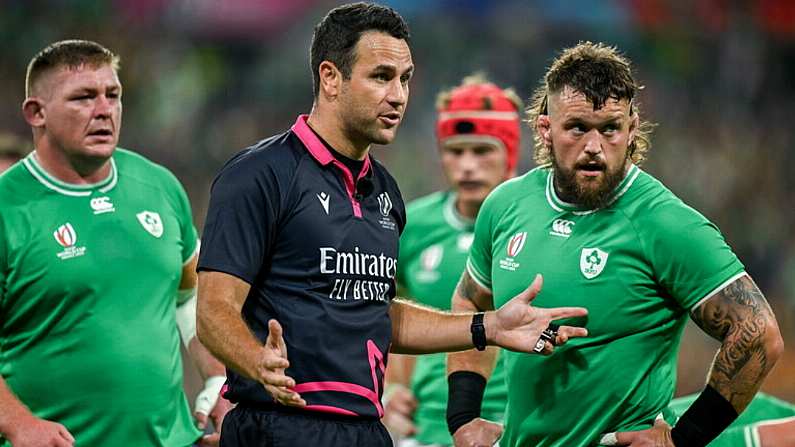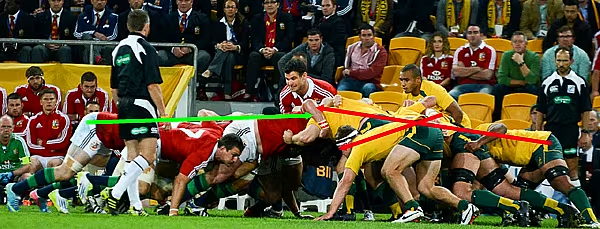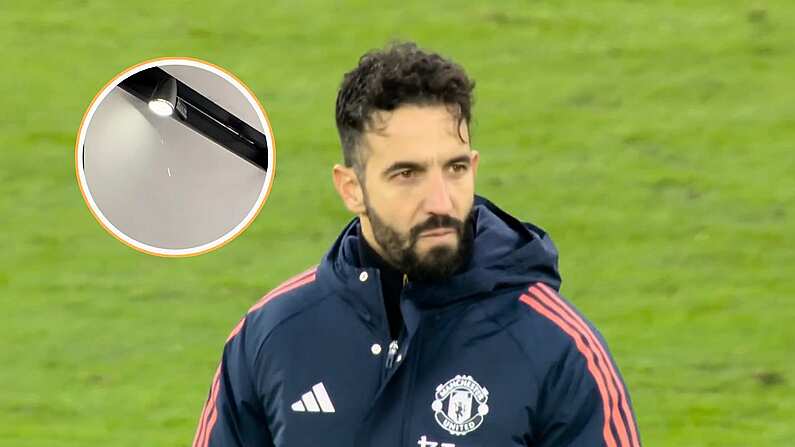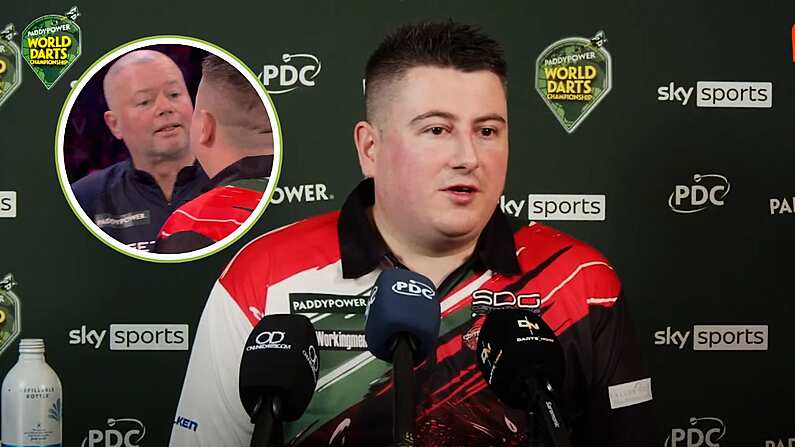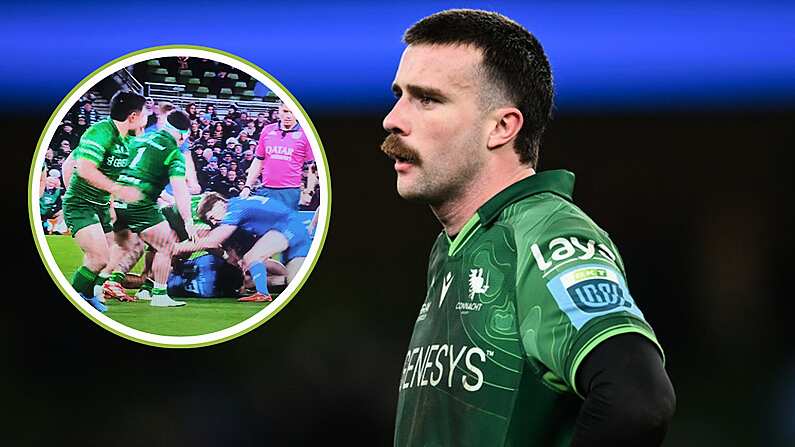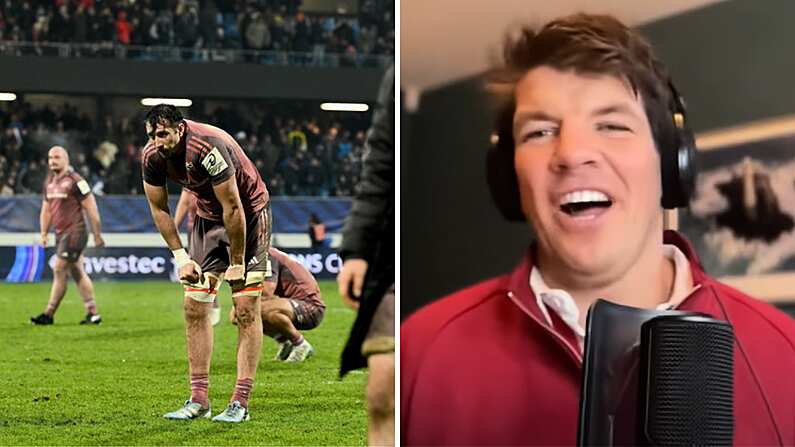In the second of this three-part series explaining the difference between two similar rugby positions, this time we will be explaining the difference between a loosehead and tighthead prop.
This article was originally published on February 13th, 2015 by Conor O'Leary.
Rugby Positions Explained - The difference between a tighthead and a loosehead
The two positions 'prop' up the two sides of the scrum, with the no.3's head surrounded by the opposition, and the no.1's head loose. Hence the name's tighthead prop, and loosehead prop.
READ HERE: Bizarre Report Claims Johnny Sexton Received Big Money Japan Offer
READ HERE: Matt Williams Is Getting Hammered Over His Bizarre Take On Issue That Is Ruining Rugby
Two different types of play
In general, rugby is split into "loose" play and "tight" play. "Loose" play refers to most of the game that can be seen by the average viewer. It involves running with the ball in open (or loose) play and is generally very quite exciting.
"Tight" play is an acquired love. Any mention of "the dark arts" of rugby involves tight play. That can be scrums, rucks or mauls. Anything on a rugby pitch with a large density of bodies where things happen and the camera hasn't a chance to pick it up.
How does this relate to the loosehead and tighthead props? Simple.
Let's take Ireland's two best loosehead and tighthead props at the moment - the loosehead Cian Healy, and tighthead Tadhg Furlong. Healy is world-renowned for his ball-carrying ability. Furlong, however, is largely left to deal with what he is known for - the scrum.
This isn't going to be an in-depth analysis of what happens in the scrum. Smarter people than us don't know what goes on in the scrum. One such smart person is Australian Scott Allen of The Roar, who takes three articles to break down what happens in a scrum in fantastic and understandable detail.
READ HERE: Rugby Fans Call World Cup Draw Into Question Once More After One-Sided Semi-Final
What happens in the scrum - each person's role/position explained
A scrum is all about getting low. A tighthead prop is the cornerstone of a scrum, that is all of the angles of force come through him.
A loosehead is tasked with trying to isolate and get under a tighthead prop, with the intention of trying to drive him up, while a tighthead tries to either pin him down using his greater weight.
In essence, in each scrum, there are two battles of supremacy between a loosehead and a tighthead.
There are some alternatives to this, and for the most part, techniques are tried by both props that are illegal, but extremely hard for the referees to spot.
Every loosehead and tighthead does this, so there's no bias here. For example, a penalty can often be given against a loosehead for collapsing in, but in reality, the scrum was lost on the tighthead's side.
One method for a tighthead to try and counterattack a powerful loosehead like this is to angle into the scrum. Shearing is when the tighthead angles towards the touchline. This takes him away from the loosehead who now has nothing to push against.
As Scott Allen explains in the first scrum of the above video (the first two minutes), the loosehead has no choice but to follow the tighthead, and turns sideways.
When the loosehead turns sideways, he loses all power, and can't resist the force of the opposition tighthead.
Teamwork in the scrum
The image below is from the Lions v Australia first test in 2013. You can see that even though the Lions by definition cobbled-together their side who haven't played much together, their cohesion is very apparent in their uniformed scrum.
Contrast that with the Australian pack, where the flankers seem to be angling down, the second rows at a sharp angle up, the no 8 is pushing straight while none of those are the same as the Australian tighthead.
This means that their power, rugby position isn't used effectively, and the co-ordinated power of the Lions was able to shove them several metres.
In the above picture, Ireland chose deliberately not to push straight. This scrum was in the second half, and you can see Heaslip in particular getting ready to angle in.
This was to combat the shearing method employed so well by Jannie du Plessis in the first half. As you can see from the gif below, this didn't work so well.
These are the small but important differences between a loosehead and a tighthead prop rugby position. It's the seen work that sets a loosehead apart, while it's the scrum technicians that thrive as tightheads. It's why there aren't many success stories of props swapping positions.
It's a lot easier to move from tighthead to loosehead, though Cian Healy proved late in his career that he's versatile enough to make the switch.
After the 2023 World Cup, there were reports that Andrew Porter is expected to make the switch to tighthead in the new World Cup cycle.

